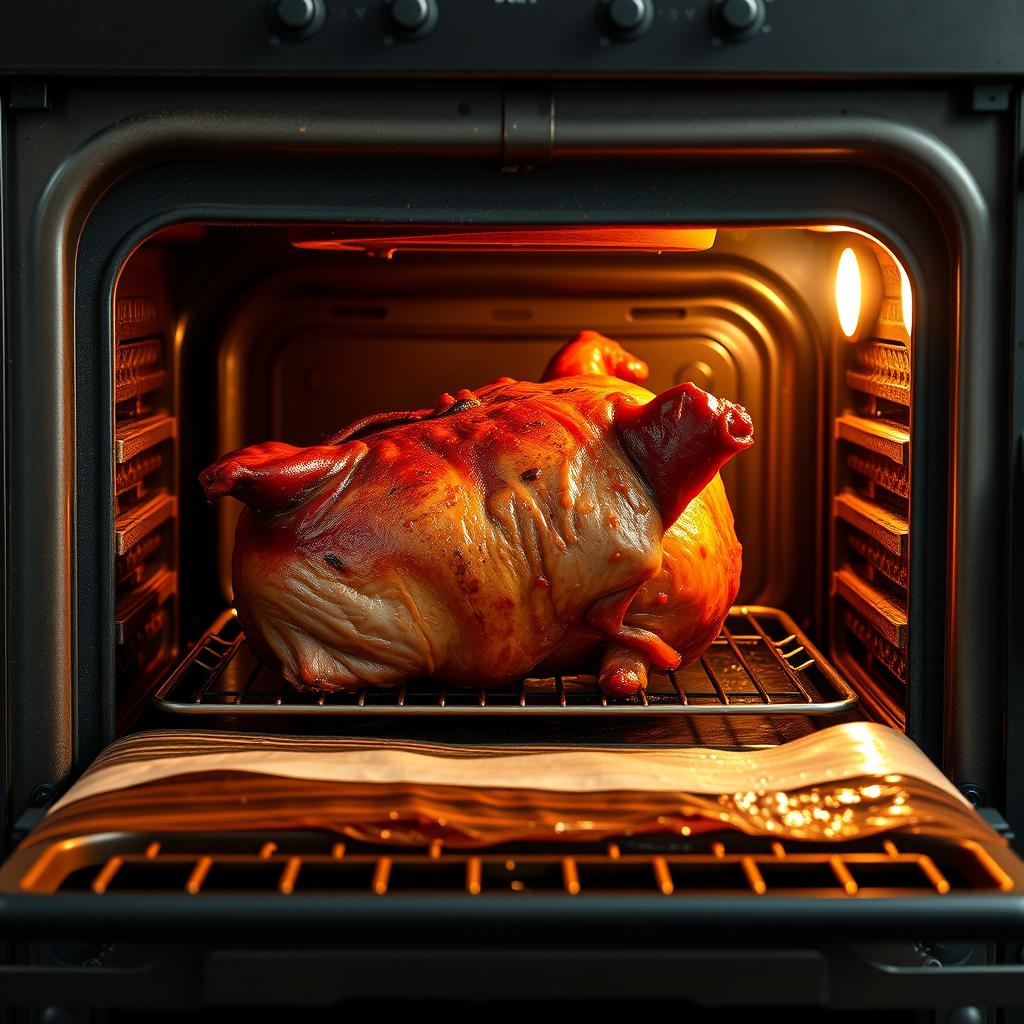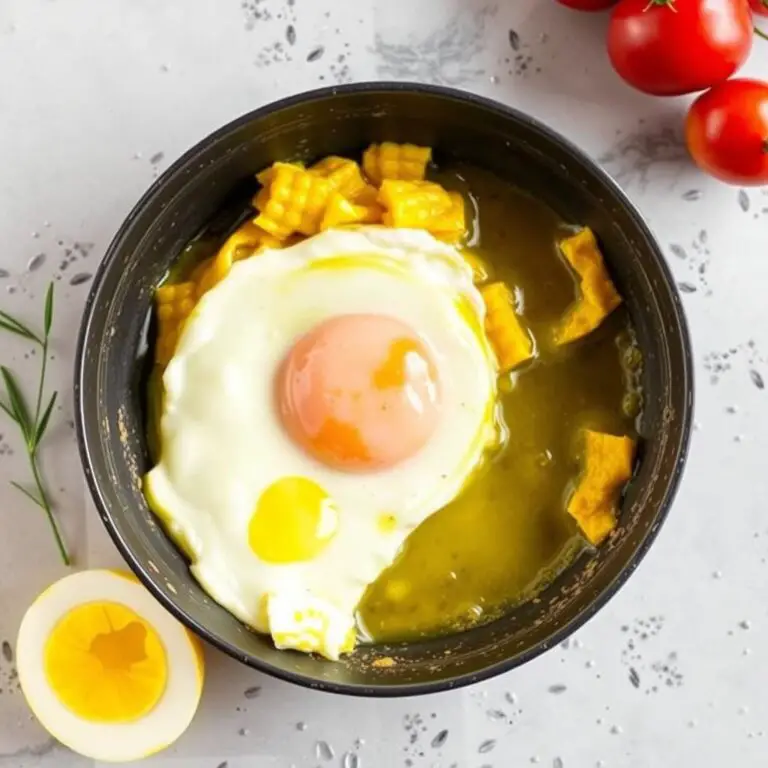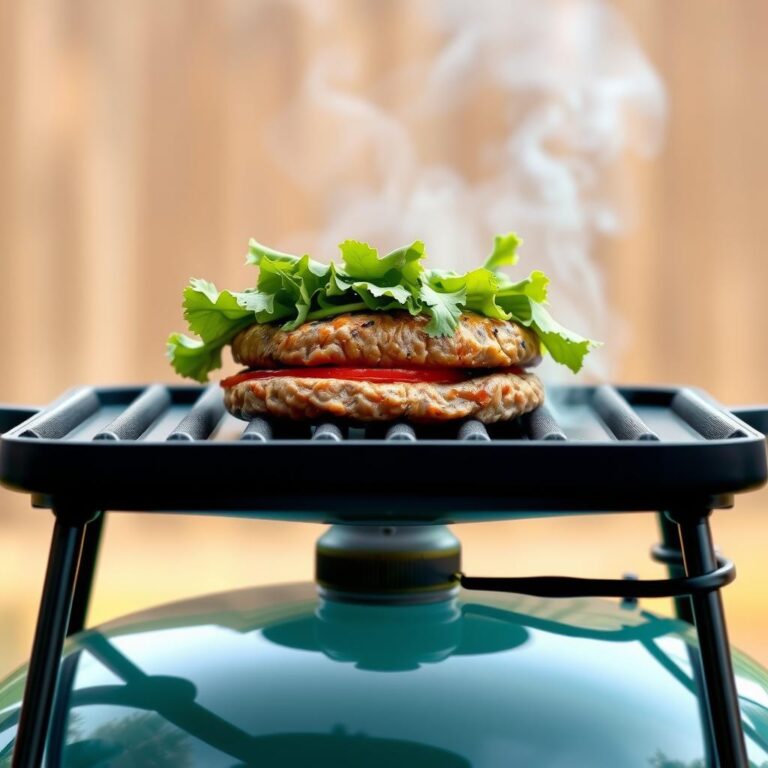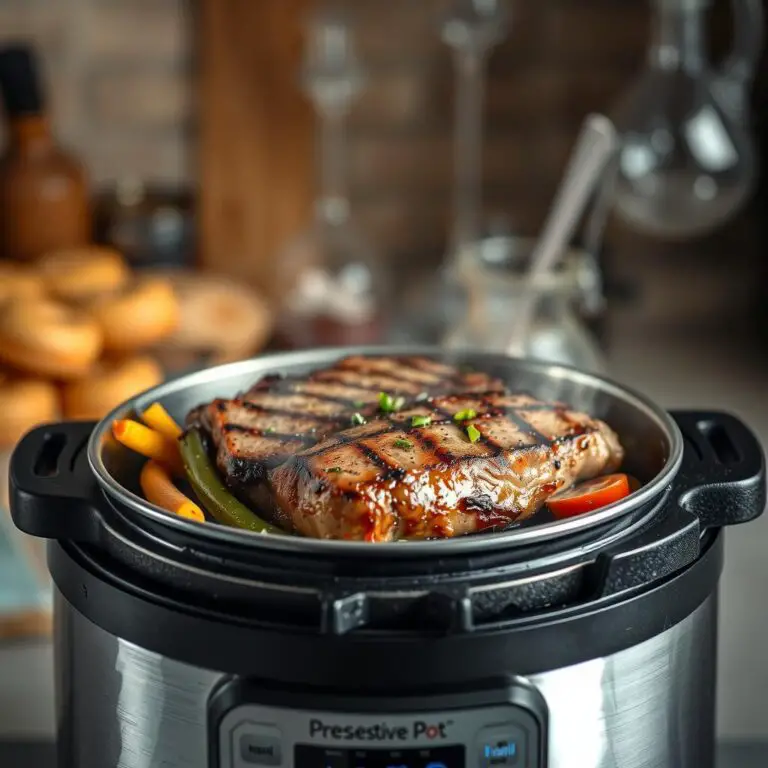Can you cook hog jowl in the oven? Absolutely, and I'm going to walk you through exactly how.
Unlocking Hog Jowl's Flavor Potential: Can You Really Cook It in the Oven?
Hog jowl, that flavorful cut of pork from the pig's cheek, often gets overshadowed, but it doesn't have to be.
You might be wondering if you can cook hog jowl in the oven.
The answer is a resounding yes, and it's a fantastic way to render its fat and bring out its savory goodness.
Think of it as a bacon alternative or a secret ingredient to elevate your Southern cuisine.
We're going to explore how to achieve perfectly cooked hog jowl using your oven, turning a humble cut into a culinary star.
Why Oven-Cooking Hog Jowl is a Smart Move
Oven cooking offers consistent heat, ensuring even rendering of the hog jowl's fat.
This method also allows you to control the level of crispiness, achieving that perfect balance between tender meat and crispy edges.
Plus, it’s relatively hands-off, freeing you up to prepare other dishes while the oven works its magic.
Forget babysitting a pan on the stovetop; the oven provides a set-it-and-forget-it approach.
Compared to smoking, frying, or braising, oven-baking hog jowl offers a simpler, less messy alternative, making it perfect for weeknight meals.
Prepping Your Hog Jowl for Oven Perfection
Before diving into the cooking process, let's talk prep.
Proper preparation is crucial for achieving the best flavor and texture.
Start by selecting high-quality hog jowl from a reputable butcher or grocery store.
Look for a cut that's firm, well-marbled with fat, and free of any discoloration.
Here's a simple breakdown of the prep steps:
- Rinse and Pat Dry: Gently rinse the hog jowl under cold water and pat it dry with paper towels. This removes any surface debris.
- Trimming (Optional): You can trim off any excess skin or overly thick pieces of fat if desired. Some people prefer leaving it on for extra crispiness.
- Scoring the Fat: Lightly score the fat cap in a crosshatch pattern. This helps the fat render evenly and prevents the jowl from curling up during cooking.
- Seasoning is Key: Now, let's get to the flavor. A simple salt and pepper rub is a great starting point, but feel free to get creative.
Elevating Flavor: Seasoning Ideas for Hog Jowl
Don't be shy with the seasoning; hog jowl can handle bold flavors.
Consider these options to take your hog jowl to the next level:
- Classic Southern: Salt, black pepper, smoked paprika, garlic powder, and onion powder.
- Spicy Kick: Add a pinch of cayenne pepper or red pepper flakes to the classic Southern mix.
- Sweet and Savory: A combination of brown sugar, salt, pepper, and a touch of maple syrup or molasses.
- Herbal Infusion: Fresh thyme, rosemary, and sage, finely chopped, mixed with salt and pepper.
- Dry Brining: Apply a generous amount of kosher salt and let the hog jowl sit in the refrigerator for several hours or overnight. This helps to draw out moisture and intensify the flavor.
Oven-Baking Hog Jowl: A Step-by-Step Guide
Now for the main event: cooking your hog jowl in the oven.
Follow these steps for perfectly cooked, flavorful hog jowl:
- Preheat Your Oven: Preheat your oven to 350°F (175°C).
- Prepare a Baking Sheet: Line a baking sheet with parchment paper or aluminum foil for easy cleanup.
Place a wire rack on the baking sheet to elevate the hog jowl, allowing for even air circulation and crispier results. - Place the Hog Jowl on the Rack: Arrange the seasoned hog jowl on the wire rack, fat side up.
- Bake to Perfection: Bake for approximately 1.5 to 2 hours, or until the internal temperature reaches 190-200°F (88-93°C).
The cooking time will vary depending on the thickness of the hog jowl.
The fat should be rendered, and the meat should be tender and slightly crispy. - Crisp It Up (Optional): For extra crispy skin, increase the oven temperature to 400°F (200°C) during the last 10-15 minutes of cooking. Keep a close eye on it to prevent burning.
- Rest Before Slicing: Once cooked, remove the hog jowl from the oven and let it rest for at least 10 minutes before slicing. This allows the juices to redistribute, resulting in a more tender and flavorful product.
Serving Suggestions: Maximizing Your Hog Jowl Experience
Once your hog jowl is cooked to perfection, it's time to enjoy it.
Here are some serving suggestions to get your creative juices flowing:
- Bacon Substitute: Slice the cooked hog jowl and use it as a substitute for bacon in breakfast dishes, sandwiches, or salads.
- Southern Staple: Add diced hog jowl to collard greens, black-eyed peas, or other Southern classics for a boost of flavor.
- Flavor Enhancer: Use rendered hog jowl fat to sauté vegetables or as a flavorful cooking oil.
- Cracklings: The crispy skin can be enjoyed as cracklings, a delicious and addictive snack.
- Charcuterie Board Addition: Thinly sliced hog jowl makes a fantastic addition to a charcuterie board, paired with cheeses, fruits, and crackers.
Storing Leftover Cooked Hog Jowl
If you happen to have any leftover cooked hog jowl, store it properly to maintain its quality and flavor.
Allow the hog jowl to cool completely before wrapping it tightly in plastic wrap or placing it in an airtight container.
Store it in the refrigerator for up to 3-4 days.
You can also freeze cooked hog jowl for longer storage, up to 2-3 months.
When reheating, you can use the oven, microwave, or skillet.
So, the next time you are wondering if you can cook hog jowl in the oven, remember this guide for a delicious meal.
Can you cook hog jowl in the oven? Absolutely, and I'm going to walk you through exactly how.
Unlocking Hog Jowl's Flavor Potential: Can You Really Cook It in the Oven?
Hog jowl, that flavorful cut of pork from the pig's cheek, often gets overshadowed, but it doesn't have to be.
You might be wondering if you can cook hog jowl in the oven.
The answer is a resounding yes, and it's a fantastic way to render its fat and bring out its savory goodness.
Think of it as a bacon alternative or a secret ingredient to elevate your Southern cuisine.
We're going to explore how to achieve perfectly cooked hog jowl using your oven, turning a humble cut into a culinary star.
Why Oven-Cooking Hog Jowl is a Smart Move
Oven cooking offers consistent heat, ensuring even rendering of the hog jowl's fat.
This method also allows you to control the level of crispiness, achieving that perfect balance between tender meat and crispy edges.
Plus, it’s relatively hands-off, freeing you up to prepare other dishes while the oven works its magic.
Forget babysitting a pan on the stovetop; the oven provides a set-it-and-forget-it approach.
Compared to smoking, frying, or braising, oven-baking hog jowl offers a simpler, less messy alternative, making it perfect for weeknight meals.
Prepping Your Hog Jowl for Oven Perfection
Before diving into the cooking process, let's talk prep.
Proper preparation is crucial for achieving the best flavor and texture.
Start by selecting high-quality hog jowl from a reputable butcher or grocery store.
Look for a cut that's firm, well-marbled with fat, and free of any discoloration.
Here's a simple breakdown of the prep steps:
- Rinse and Pat Dry: Gently rinse the hog jowl under cold water and pat it dry with paper towels. This removes any surface debris.
- Trimming (Optional): You can trim off any excess skin or overly thick pieces of fat if desired. Some people prefer leaving it on for extra crispiness.
- Scoring the Fat: Lightly score the fat cap in a crosshatch pattern. This helps the fat render evenly and prevents the jowl from curling up during cooking.
- Seasoning is Key: Now, let's get to the flavor. A simple salt and pepper rub is a great starting point, but feel free to get creative.
Elevating Flavor: Seasoning Ideas for Hog Jowl
Don't be shy with the seasoning; hog jowl can handle bold flavors.
Consider these options to take your hog jowl to the next level:
- Classic Southern: Salt, black pepper, smoked paprika, garlic powder, and onion powder.
- Spicy Kick: Add a pinch of cayenne pepper or red pepper flakes to the classic Southern mix.
- Sweet and Savory: A combination of brown sugar, salt, pepper, and a touch of maple syrup or molasses.
- Herbal Infusion: Fresh thyme, rosemary, and sage, finely chopped, mixed with salt and pepper.
- Dry Brining: Apply a generous amount of kosher salt and let the hog jowl sit in the refrigerator for several hours or overnight. This helps to draw out moisture and intensify the flavor.
Oven-Baking Hog Jowl: A Step-by-Step Guide
Now for the main event: cooking your hog jowl in the oven.
Follow these steps for perfectly cooked, flavorful hog jowl:
- Preheat Your Oven: Preheat your oven to 350°F (175°C).
- Prepare a Baking Sheet: Line a baking sheet with parchment paper or aluminum foil for easy cleanup.
Place a wire rack on the baking sheet to elevate the hog jowl, allowing for even air circulation and crispier results. - Place the Hog Jowl on the Rack: Arrange the seasoned hog jowl on the wire rack, fat side up.
- Bake to Perfection: Bake for approximately 1.5 to 2 hours, or until the internal temperature reaches 190-200°F (88-93°C).
The cooking time will vary depending on the thickness of the hog jowl.
The fat should be rendered, and the meat should be tender and slightly crispy. - Crisp It Up (Optional): For extra crispy skin, increase the oven temperature to 400°F (200°C) during the last 10-15 minutes of cooking. Keep a close eye on it to prevent burning.
- Rest Before Slicing: Once cooked, remove the hog jowl from the oven and let it rest for at least 10 minutes before slicing. This allows the juices to redistribute, resulting in a more tender and flavorful product.
Serving Suggestions: Maximizing Your Hog Jowl Experience
Once your hog jowl is cooked to perfection, it's time to enjoy it.
Here are some serving suggestions to get your creative juices flowing:
- Bacon Substitute: Slice the cooked hog jowl and use it as a substitute for bacon in breakfast dishes, sandwiches, or salads.
- Southern Staple: Add diced hog jowl to collard greens, black-eyed peas, or other Southern classics for a boost of flavor.
- Flavor Enhancer: Use rendered hog jowl fat to sauté vegetables or as a flavorful cooking oil.
- Cracklings: The crispy skin can be enjoyed as cracklings, a delicious and addictive snack.
- Charcuterie Board Addition: Thinly sliced hog jowl makes a fantastic addition to a charcuterie board, paired with cheeses, fruits, and crackers.
Storing Leftover Cooked Hog Jowl
If you happen to have any leftover cooked hog jowl, store it properly to maintain its quality and flavor.
Allow the hog jowl to cool completely before wrapping it tightly in plastic wrap or placing it in an airtight container.
Store it in the refrigerator for up to 3-4 days.
You can also freeze cooked hog jowl for longer storage, up to 2-3 months.
When reheating, you can use the oven, microwave, or skillet.
So, the next time you are wondering if you can cook hog jowl in the oven, remember this guide for a delicious meal.
Now let's dive into some extra tips and tricks to ensure your oven-baked hog jowl is a guaranteed hit.
Mastering the Art of Rendering: Getting the Perfect Hog Jowl Texture in the Oven
Getting that melt-in-your-mouth texture is key when you cook hog jowl in the oven.
It's all about properly rendering the fat without drying out the meat.
Low and slow is the name of the game here.
- Temperature Control: Stick to that 350°F (175°C) sweet spot for the majority of the cooking time.
This gentle heat coaxes the fat to render slowly and evenly. - Basting is Your Friend: If you notice the surface drying out, baste it with its own rendered fat every 30 minutes.
This helps keep it moist and adds flavor. - Don't Rush It: Patience is crucial.
The total cooking time will depend on the thickness of your hog jowl, but don't be tempted to crank up the heat to speed things up.
You'll risk burning the outside before the inside is properly cooked.
Troubleshooting Common Hog Jowl Oven-Cooking Problems
Sometimes things don't go exactly as planned, even when you're trying to cook hog jowl in the oven.
Here are a few common issues and how to fix them:
- Hog Jowl is Too Dry: This usually happens when the oven temperature is too high, or the cooking time is too long.
Try lowering the temperature and basting more frequently.
You can also tent the hog jowl with foil to trap moisture. - Skin Isn't Crispy Enough: If the skin isn't as crispy as you'd like, try increasing the oven temperature to 400°F (200°C) for the last 10-15 minutes of cooking.
Just be sure to keep a close eye on it to prevent burning. - Uneven Cooking: Make sure your oven is properly calibrated and that the hog jowl is placed in the center of the oven for even heat distribution.
A wire rack helps with this as well.
Hog Jowl vs. Bacon: A Flavor Comparison When Oven-Baked
People often ask, "How does oven-baked hog jowl compare to bacon?"
While both are pork products, they offer distinct flavor profiles.
- Flavor: Hog jowl has a richer, more intense pork flavor than bacon.
It's also slightly sweeter. - Texture: When cooked in the oven, hog jowl tends to be more tender and less crispy than bacon.
However, you can achieve a similar level of crispiness by increasing the oven temperature at the end of cooking. - Fat Content: Hog jowl has a higher fat content than bacon, which contributes to its rich flavor and tender texture when you cook it in the oven.
- Cost: Hog jowl is generally less expensive than bacon, making it a budget-friendly alternative.
Beyond the Basics: Creative Hog Jowl Oven-Cooking Ideas
Ready to experiment with your oven-cooked hog jowl?
Here are a few creative ideas to inspire you:
- Hog Jowl Pizza: Top your homemade pizza with crispy, oven-baked hog jowl, caramelized onions, and your favorite cheeses.
- Hog Jowl Tacos: Use diced, oven-baked hog jowl as a filling for tacos, topped with salsa, cilantro, and lime.
- Hog Jowl Mac and Cheese: Add crispy, crumbled hog jowl to your mac and cheese for a smoky, savory twist.
- Hog Jowl Salad: Toss oven-baked hog jowl with mixed greens, roasted vegetables, and a vinaigrette dressing.
- Hog Jowl Benedict: Replace the Canadian bacon in your eggs Benedict with sliced, oven-baked hog jowl for a Southern-inspired brunch.
Hog Jowl: A Nutritional Overview
Hog jowl, when you cook it in the oven, is a rich source of protein and fat, providing energy and essential nutrients.
However, it's also high in saturated fat and sodium, so it's best enjoyed in moderation.
It contains vitamins and minerals like iron and zinc.
Expert Tips for Buying the Best Hog Jowl
Choosing the right hog jowl is essential for a successful oven-cooking experience.
- Source: Buy from a reputable butcher or grocery store.
- Appearance: Look for a firm cut with good marbling and no discoloration.
- Smell: It should smell fresh, not sour.
- Fat Content: A good layer of fat is desirable, but avoid cuts that are excessively fatty.
- Ask Your Butcher: Don't hesitate to ask your butcher for advice on selecting the best cut for oven-baking.
Frequently Asked Questions About Cooking Hog Jowl in the Oven
Can I cook hog jowl from frozen in the oven?
It's best to thaw hog jowl completely before cooking for even results.
How do I prevent hog jowl from curling up in the oven?
Scoring the fat cap helps prevent curling.
Can I cook hog jowl in a convection oven?
Yes, but reduce the cooking time by about 20% and keep a close watch.
What's the best way to reheat cooked hog jowl?
You can reheat it in the oven, microwave, or skillet.
Can I use a meat thermometer to check for doneness?
Yes, the internal temperature should reach 190-200°F (88-93°C).
Is hog jowl the same as guanciale?
While both are pork cheek, guanciale is cured, while hog jowl is usually fresh or smoked.
How long does it take to cook hog jowl in the oven?
Typically 1.5 to 2 hours at 350°F (175°C), depending on thickness.
In conclusion, you absolutely can cook hog jowl in the oven, and with these tips, you're well on your way to creating a flavorful and memorable dish.





